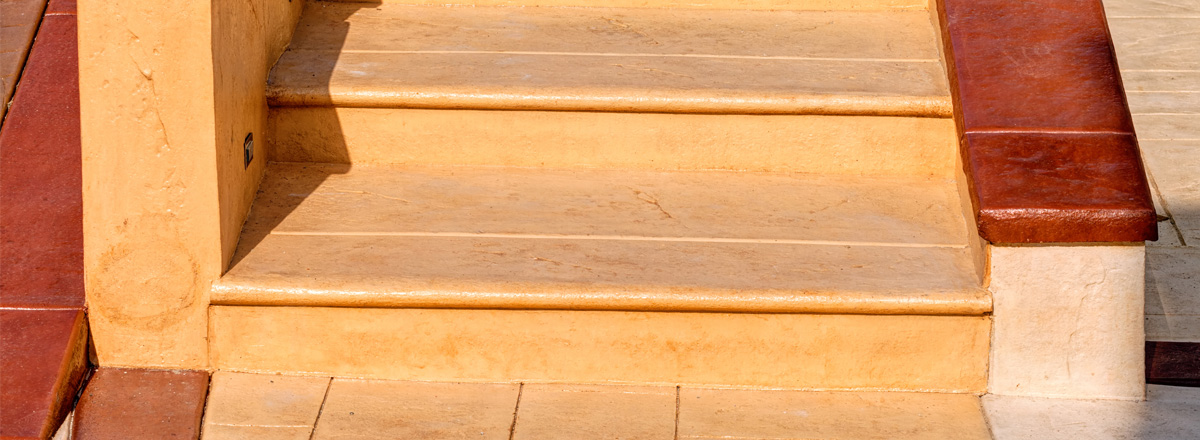
How to Paint Concrete Steps
Unfinished concrete soaks up water, which can lead to cracking, chipping and other symptoms of premature degeneration. Prevent this by protecting your steps with a coat of paint. Or, if your steps were previously painted, you can refresh the color or the finish with a topcoat of paint. Careful preparation, including etching new concrete and removing peeling paint, are essential prerequisites for top-quality results.
Prepare New Concrete Steps
Fresh concrete needs to cure for 30 to 60 days before it's dry enough to paint. Perform a moisture test by taping a piece of clear plastic to one of the steps and leaving it for a day – if you notice condensation on the underside of the plastic, the concrete needs more time to dry. Once the steps are dry enough to paint, check porosity by spraying some water on the steps to make sure it soaks in. If it doesn't, the concrete probably won't hold paint either, so consider leaving the steps unpainted until a later date. Finally, etch new, porous concrete with a commercial etching product – following the directions on the container – and rinse thoroughly.
Prepare Previously Painted Steps
If your steps have been previously painted, you may elect to strip the paint with a chemical stripper, which is advisable if the paint is in poor condition. Otherwise, use a wire brush to scrub off loose paint, then sweep the paint chips into a pile, collect and dispose them. If the concrete is cracked or chipped, fill the voids with mortar or epoxy concrete filler. After this product dries – which takes about 24 hours –clean up the patches by sanding them with an orbital sander, just as you would sand similar patches on wood. Work with 120-grit wet/dry sandpaper, which keeps its tooth longer than garnet or silicon oxide paper.
Wash and Prime
Etch previously painted concrete with a cleaning solution. Work the solution in with a stiff scrub brush to degrease the existing paint while you etch it. Rinse the steps well, then mask around the post bases and bottom rail, if present, with masking tape. Seal unpainted concrete with concrete bonding primer. Apply a single coat of the primer, starting at the top of the steps and working down. A Wagner FLEXiO 890 paint sprayer will get the job done faster than a brush, and with a better finish.
Apply the Top Coat

Use high-quality oil-based or latex porch and floor enamel. To prevent accidents on the steps, a non-slip coating is recommended; you can either stir aggregate into your paint or purchase paint with the aggregate already added. Porch and floor enamel is usually too thick to spray, especially if it contains aggregate, so apply it with a 4-inch paintbrush. Keep in mind that adding aggregate to the paint usually reduces the coverage. Plan for that by having an extra gallon on hand. You can save paint by adding aggregate only to the final coat. When you've applied the final coat, step back and appreciate the difference you just made to your home's appearance.